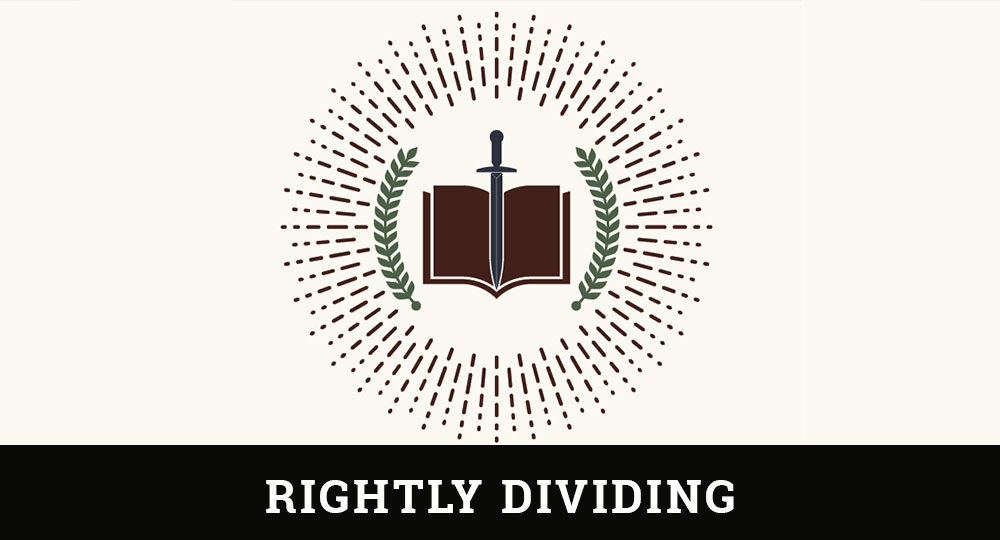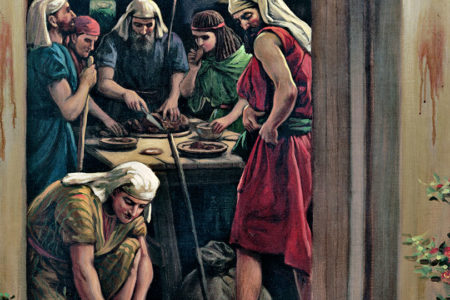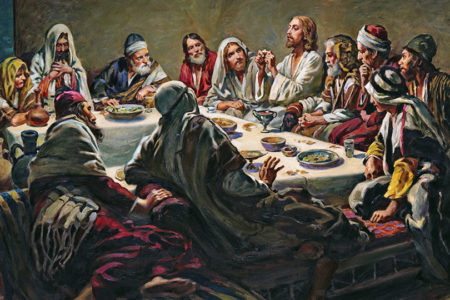The First Epistle of John
In most Bible-believing churches, a Sunday morning service seems filled with a spirit of joy and harmony. Visitors are welcomed warmly and invited to please come back next Sunday. If one attends for a while, however, the initial impression fades, and the church appears to be filled with problems and sometimes doctrinal inconsistencies.
In each generation, God’s church faces internal and external difficulties with false doctrine and corrupt people. The first-century church was no different; it had to deal with false teaching, corrupt teachers, and pastoral and polemic issues.
Plaguing the church in the apostle John’s day were such heresies as Docetism, which claimed Jesus’ humanity was not real; Gnosticism, which emphasized the need of philosophical knowledge for salvation; and the heresy of the Cerinthians, which claimed Jesus was merely a man and not God. Consequently, John repeatedly presented a strong Christology so believers would be able to avoid doctrinal error and become grounded in truth.
Left unchecked, a pseudo-Christology taught by false teachers can produce disharmony and eventually divide a church. John dealt with false doctrine head on to stem the problems before they produced a schism within the body of Christ.
John said many false teachers in the church claimed to be without sin and to walk in the light and love of God. But in reality, they were utterly self-deceived and were deceiving others. He declared that such people cannot have true fellowship with God and other Christians because they walk in darkness and deception.
The First Epistle of John is extremely important because it provides sound doctrine, while dealing with pastoral and polemic problems facing believers throughout the Church Age. Under the guidance of the Holy Spirit, John gave special attention to the doctrines of God, Christ, the Holy Spirit, sin, salvation, and end-times prophecy.
The epistle is greatly needed today because it provides God’s guidelines for addressing conflict within the church. John provided the essential, foundational practices that will lead any church to a sound, God-honoring fellowship.
Author of the Book
Though the author of 1 John is never mentioned in the epistle, the letter has been attributed to the apostle John since the first century. The same is true of the Gospel of John, whose author also is not mentioned. Of the five books John authored, only the book of Revelation bears his name.
The church fathers in the first and second centuries recognized John as the author of 1 John. Irenaeus, who when he was young, heard Polycarp speak, testified that Polycarp had been John’s disciple and knew he wrote 1 John. The epistle’s content, language, and style are similar to those in the Gospel of John, and the epistles of 2 John and 3 John.
Wrote Dr. Daniel L. Akin,
A comparison of 1 John and the Fourth Gospel reveals numerous similarities in theology, vocabulary, and syntax. Note the revealing contrast or polarities in each: life and death, truth and falsehood, light and darkness, children of God and children of the devil, love and hate. A. E. Brooke identifies no fewer than fifty-one parallel references in 1 John and the Gospel of John:…
In our unredeemed state we are “of the devil,” who has sinned and lied and murdered “from the beginning” (1 John 3:8/John 8:44); we are “from the world” (2:16; 4:5/8:23; 15:19). We therefore “sin” (3:4/8:34) and “have” sin (1:8/9:41), “walk in the darkness” (1:6; 2:11/8:12; 12:35) and are “dead” (3:14/ 5:25). God loved and sent His Son to be “the Savior of the World” (4:14/4:42) so that “we might live” (4:9/3:16). Believing in him or in his “name” (5:13/1:12), we pass from death to life (3:14/5:24). We “have life” (5:11, 12/3:15, 36; 20:31), for life is in the Son of God (5:11–12/1:4; 14:6). This is what it means to be “born of God” (2:29; 3:9; 5:4, 18/1:13).1
When and where John wrote this epistle are uncertain. Some say it was written before A.D. 70 when Jerusalem was destroyed. Others say around A.D. 85-90, after the Gospel of John. The date has been placed at the end of the first century because of the type of heresy John’s epistles condemn and the information Polycarp and Irenaeus supplied. There is not enough internal or external evidence to fix an exact date. Whatever date one chooses, one must leave time for the development and growth of the doctrinal error mentioned in the book.
There is no indication where the Gospel of John or the First Epistle of John was written. Tradition maintains John wrote this letter in Ephesus. Soon afterward, in A.D. 95, Roman Emperor Domitian arrested him as a religious-political prisoner and banished him to the island of Patmos, a small, isolated, volcanic island in the Aegean Sea. The aged apostle was forced to perform hard labor in the mines on Patmos. However, he was released after 18 months by Emperor Nerva. It is traditionally held that John returned to Ephesus, where he lived out his remaining years and died an old man.
Addressees of the Book
The First Epistle of John provides no internal or external information concerning the people being addressed. Nor is a particular area mentioned to indicate where the addressees lived. It seems John wrote to believers in and around the city of Ephesus, where he ministered in his latter years. Because of statements he made about their spiritual state (1 Jn. 2:12–14, 21; 5:13), it is believed he was writing to specific believers who were anointed by the Holy Spirit (2:20, 27). They were mostly Gentile believers from a heathen background because John concluded his letter by commanding them, “Keep yourselves from idols” (5:21).
Although there are no Old Testament references in 1 John, it is believed the letter was also to Jewish believers scattered throughout Asia. It was probably written to a number of churches under John’s supervision. Those addressed were very knowledgeable about the truth of the Christian faith because John continually reiterated that this was not new truth he was sharing with them, for they had known it from the beginning (2:7, 18, 20–21, 24, 27; 3:11). It is also evident John had been their teacher and had known them a long time.
However, they had various levels of commitment. Some were committed Christians who faithfully followed the Lord and John’s teachings. Others constituted a heretical group of professing believers from a Jewish or Gentile background. And still others were anti-Christians who originally professed faith in Jesus Christ but eventually left the church fellowship (2:18–19, 22–23). The epistle was not merely for believers in the first century, but also for generations of Christians in the future. His message touches theological heresies and ethical issues facing the church in every era.
Authority of the Book
The authority of John’s writing is anchored in Jesus Christ: who He is; His purpose in coming; and what He has provided for humankind, especially the church. Christ is the central point for faith and practice, and John began his letter by saying, “That which was from the beginning” (1:1). All Christology begins with Jesus Christ, the Son of God, who is the preexistent Word of God who came to Earth via the incarnation. In other words, Jesus Christ is God who took on human flesh and now exists throughout eternity as the God-Man. As the foundation of the church, Christ is central to all Christian theology, and from Him will flow the revelation that John pens to the church in his epistle.
The apostle also testified that he heard, saw, physically touched, and bore witness to Jesus Christ as the Word of life, with whom He had precious fellowship. He wrote extensively in his Gospel about Jesus’ authority, identified Him as the Messiah, and confirmed Him as God. John’s testimony was enlightening, uplifting, convincing, and encouraging to the first-century reader, as well as to Christians in every period of church history.
In his epistle, John also wrote about the unique relationship that existed in eternity past between Jesus the Son of God and God the Father. Through Jesus Christ, a similar type of precious fellowship is available to all Christians. Within the family of God, believers experience the light; love; and, above all, life provided by God the Father through Jesus Christ the Son. Thus fellowship with God the Father is through one’s connection with Jesus Christ, whom the Father loves. All these truths were revealed to Christians so that their “joy may be full” (1:4).
Assurance of the Believer
The church under John’s supervision dealt with many false doctrines and faced both personal and practical problems within its fellowship. Some within the church had become confused about their relationship with the Lord, making them unsure of their salvation. Sadly, the same is true for many believers today. Using the word know 26 times in his first epistle, John set out to encourage believers that they can “know” with certainty they possess eternal life in Christ:
He who has the Son has life; he who does not have the Son of God does not have life. These things I have written to you who believe in the name of the Son of God, that you may know that you have eternal life, and that you may continue to believe in the name of the Son of God (5:12–13).
These words, penned under the inspiration of God, provide irrefutable assurance to believers that they indeed possess eternal life and warn unbelievers of their destiny should they reject Christ as Savior.
In the next article, we will start our exciting journey through the First Epistle of John. Lord willing, it will be a journey that will bless your heart, provide spiritual strength, and give you answers as you face many of the same doctrinal and practical issues experienced by the first-century church.
ENDNOTE
- Daniel L. Akin, The New American Commentary, vol. 38, 1, 2, 3, John, electronic ed. (Nashville, TN: Broadman & Holman, 2001), Logos Library System.








Thank you kindly Sir. Very informative and biblical. God bless you

